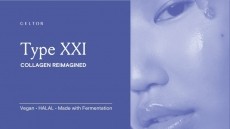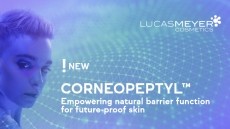Special Edition: Personalised Beauty in a Digital Revolution
Beyond skin care: Ultra-personalised colour cosmetics the future in beauty

Personalised beauty continues to build – in interest and innovation terms – worldwide, with a huge focus placed on skin care formulations and custom fragrances. But what about personalised colour cosmetics? What sort of future can we expect in this segment?
Jenni Middleton, director of beauty at trend forecasting firm WGSN, said there was plenty of innovation going on in this category already and lots more happening on the horizon.
Ultra-personalised colour cosmetics the future
“Customising our application of our makeup to our faces will become more prevalent,” Middleton told CosmeticsDesign-Europe.
Procter & Gamble had already advanced in this field, she said, with its Opté Wand device that took ten years to develop. Designed as an alternative to full-face foundation, she said Opté’s tiny camera scanned the face for dark spots, freckles or hyperpigmentation, including imperfections not visible to the human eye and precisely dispensed a pigmented serum to the affected area. This “negated the need to apply foundation to the whole face”, she said, meaning consumers could leave healthy skin to breathe.
“Customised makeup is also going to be with us for ultra-personalised colour cosmetics where users can choose their own shades,” Middleton said. In this space, L’Oréal’s Perso device – due to launch next year – was right on-point as it enabled users to create custom lipsticks by blending pre-sets in the app or colour-matching to any image, trend or outfit.
But beyond precision application and colour matched shades, Middleton said the future of personalised colour cosmetics would even see consumers able to print their own makeup to order. New York-based beauty tech firm Mink had developed a 3D makeup printer that could instantly transform any image into wearable makeup, printed onto a sheet. Mink Beauty launched last year for pre-orders, set to be delivered this Autumn.
Coloured cosmetics that align with post-COVID needs
Middleton said that this raft of technology for coloured cosmetics importantly aligned well with current market trends and consumer needs.
“In a post-pandemic world, creating a product fresh each day has dual benefits – you know the product is custom-blended specifically to meet your needs and will work for you, especially important in a recession where money is tight, and it is fresh so will not develop bacteria and viruses and yet doesn’t need preservatives as you make it and use it.”
Future developments in the post-COVID-19 market would do well to also drive efforts in digital options, she said, including high-performing virtual try-ons and the like.
“Brands have got to make personalisation work effectively and as seamlessly in the e-commerce world as in the In Real Life (IRL) experiences. Sales will depend on virtual try on, and the only way to discover a brand safely will be through online try-on. This will be imperative for shade matching for foundation and hair colour, as well as other colour cosmetics try-on, but also for diagnosis of skin conditions and skin type,” she said.


























